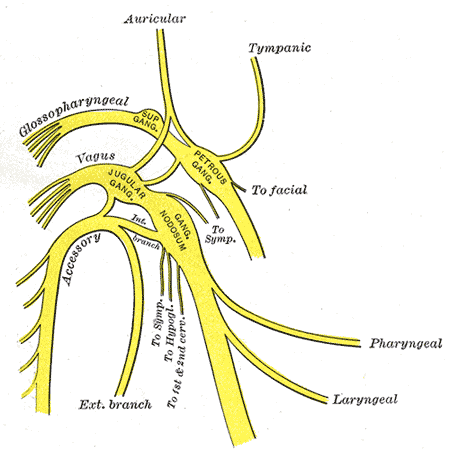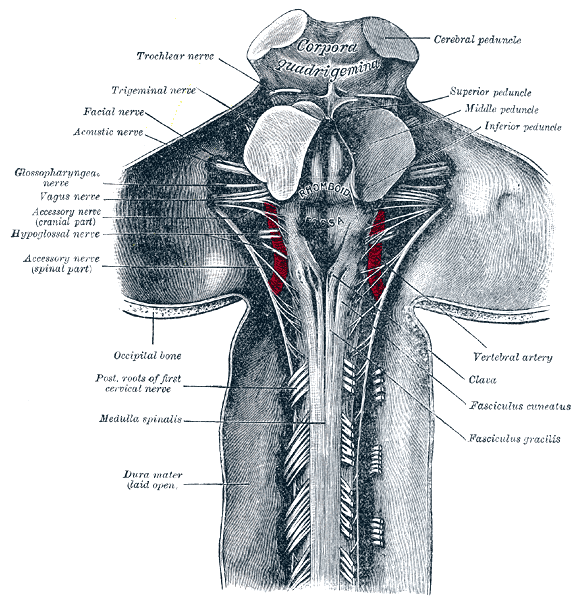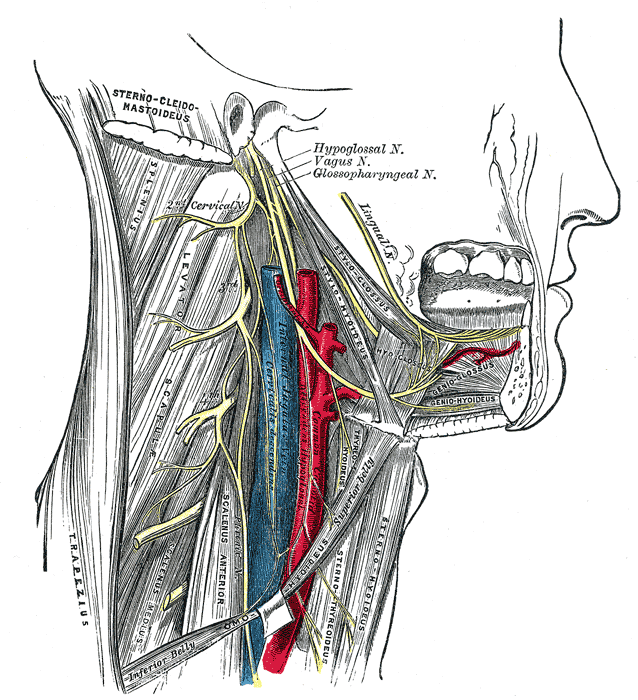CN IX Glossopharyngeal Nerve
Functions
Touch & Pain
- (Mucosa of Posterior Tongue, Tonsil, Middle ear, Nasopharynx, Oropharynx, Carotid Sinus & Body)
- Superior Glossopharyngeal ganglion
- Spinal Trigeminal Tract
- Spinal Trigeminal Nucleus
- Medial lemniscus (Touch) and Spinal lemniscus (Pain)
- Sensory cortex
Dysfunction
| Syndrome (Eponym) | Nerves Affected | Location of Lesion |
|---|---|---|
| Collet-Sicard | CN IX, X, XI, XII2 | Retroparotid space usually Lesion may be intracranial or extracranial2 |
| Villaret | CN IX, X, XI, XII Plus the sympathetic chain CN VII is occassionally involved2 |
Retroparotid or retropharyngeal space2 |
| Garcin (hemibase syndrome) | All Cranial Nerves on one side (often incomplete)2 |
Often infiltrative; Arising from base of skull (especially nasopharyngeal carcinoma)2 |
References
1.
Gray H. Anatomy of the Human Body. 20th ed. (Lewis WH, ed.). Lea & Febiger; 1918. https://www.bartleby.com/107/
2.
Brazis PW, Masdeu JC, Biller J. Localization in Clinical Neurology. 8th ed. Wolters Kluwer Health; 2022.
Citation
For attribution, please cite this work as:
Yomogida N, Kerstein C. CN IX Glossopharyngeal
Nerve. https://yomokerst.com/The
Archive/Neuroscience/Neuroanatomy/Cranial
Nerves/CN9_Glossopharyngeal.html



